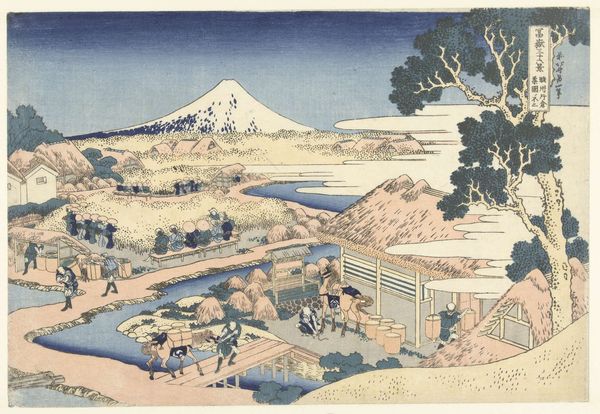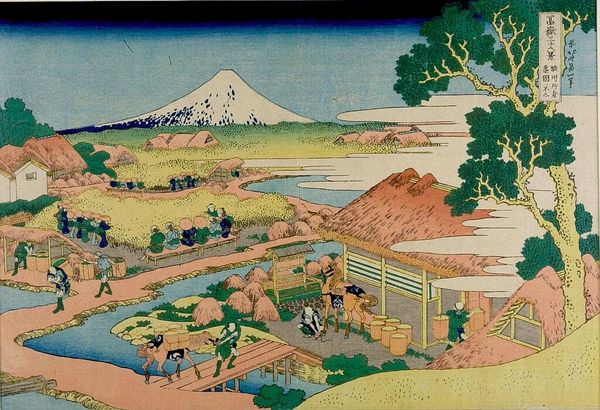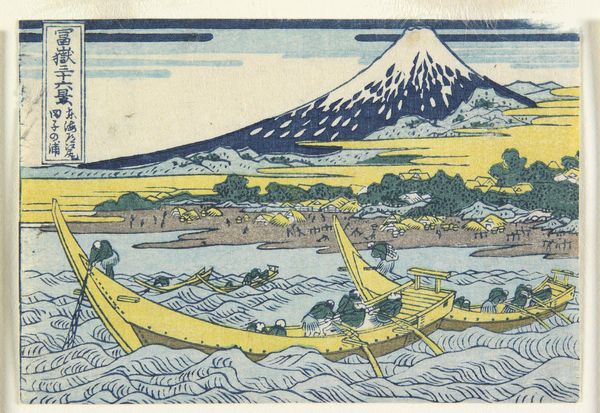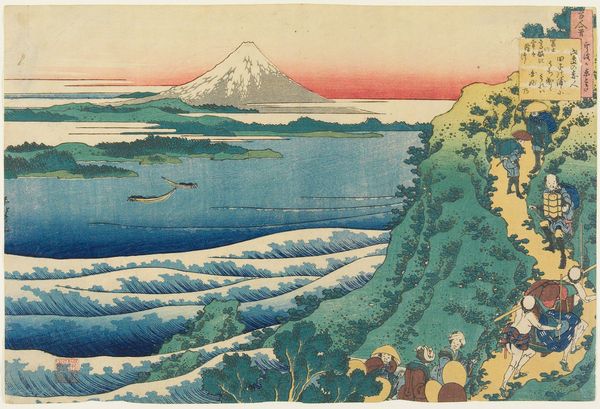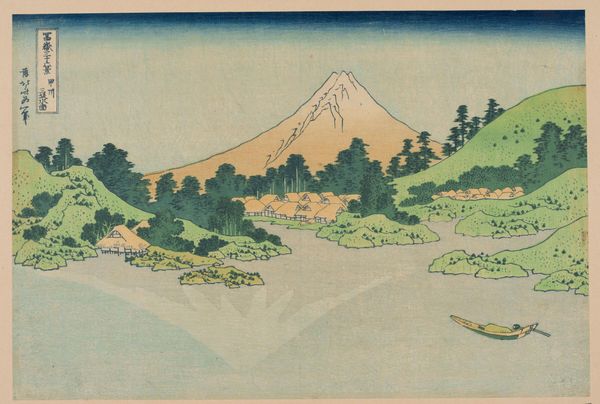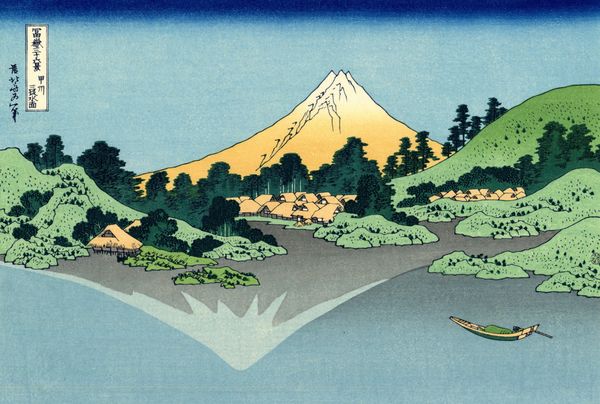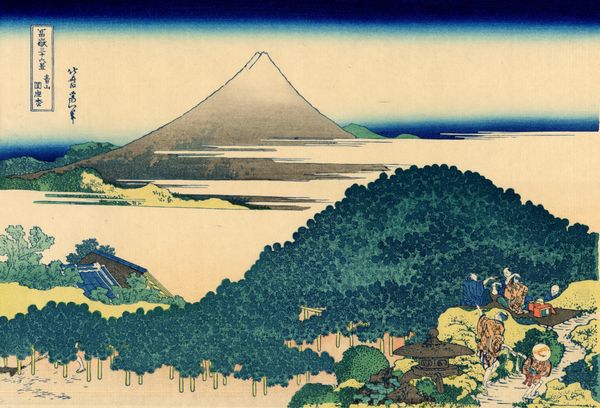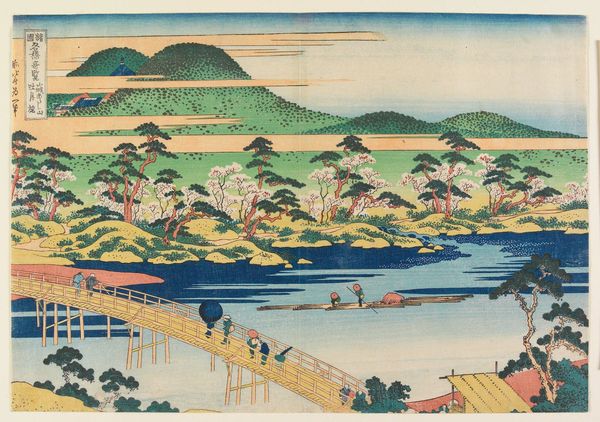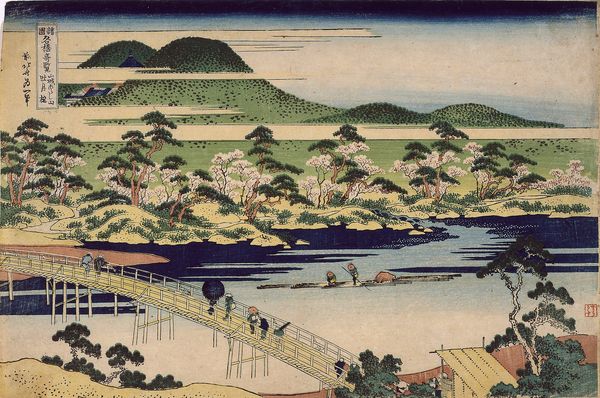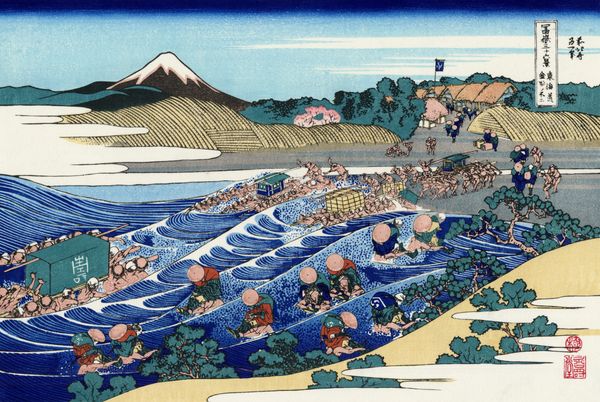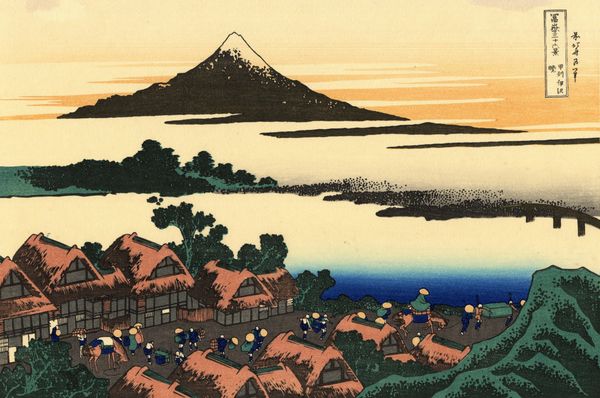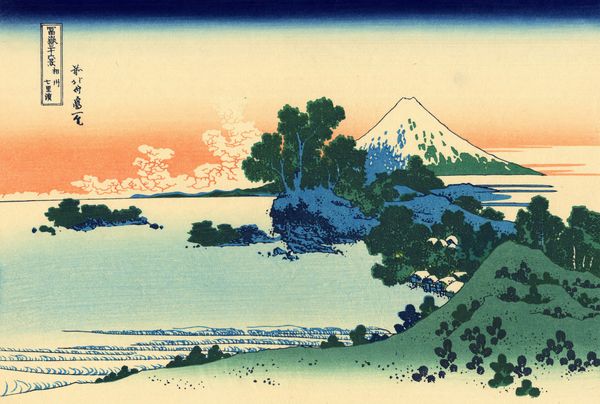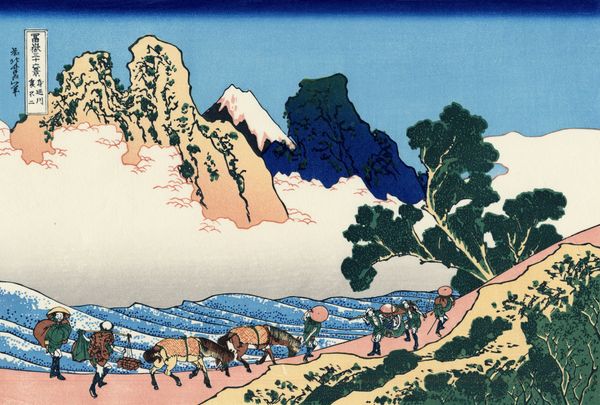
print, plein-air, woodblock-print
#
ink painting
# print
#
plein-air
#
asian-art
#
landscape
#
ukiyo-e
#
woodblock-print
#
geometric
#
mountain
#
orientalism
#
water
Copyright: Public domain
Editor: Looking at this print, *The Tea Plantation of Katakura in the Suruga Province* by Katsushika Hokusai, the scene feels very ordered and productive. All these figures are efficiently moving resources through the plantation. It is so beautiful. What am I missing in the bigger picture? Curator: It is beautiful. Hokusai, deeply inspired by plein-air art movements, skillfully captures not only the physical landscape, dominated by Mount Fuji, but also the social dynamics of the time. Consider the Ukiyo-e tradition, these prints were not simply decorative; they were powerful tools of social commentary. Editor: So, what kind of commentary might Hokusai be offering here? Curator: The positioning of Mount Fuji is incredibly strategic. Not just as a beautiful natural form but also as a symbol of power and stability, observing the industriousness below. The figures are engaged in their labor within a structured, almost geometric, composition. Does that suggest anything about social structures to you? Editor: Hmm, it almost feels like Hokusai is showing how everyone, even amid beauty, has a role and place. There’s a kind of serene acceptance of social order. Curator: Exactly. This image also touches on the increasing commercialization of resources. How the tea plantations boosted economy during his period. So, its popularity acted as commercial material. Editor: That makes sense! I see now there's more than meets the eye, beneath the pleasant colours is embedded social-economical significance! Thank you for enriching my understanding! Curator: And thank you for sharing your insights. It’s always a pleasure to revisit these familiar works with a fresh perspective.
Comments
No comments
Be the first to comment and join the conversation on the ultimate creative platform.
